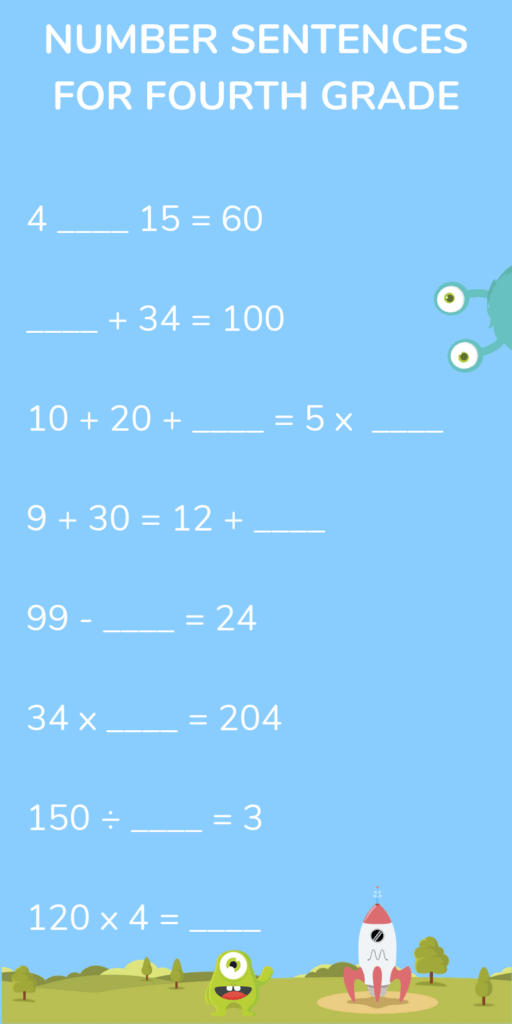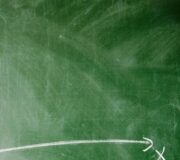What Is A Number Sentence? Explained For Elementary School Teachers, Parents And Kids
In this post we will be answering the question “what is a number sentence?” and running through everything you need to know about this key concept for elementary school math! We’ve also got a selection of number sentence questions you can use to test out children’s skills, so make sure you scroll to the bottom of the post!
What is a number sentence?
A number sentence is a combination of numbers and mathematical operations that children are often required to solve.
Examples of number sentences include:
32 + 57 = ?
5 x 6 = 10 x ?
103 + ? = 350
They will usually be composed of addition, subtraction, multiplication or division – or a combination of all four! Remember – You may consider the above simply as “sums”, but referring to them as this can be confusing for children because the word “sum” should only be used when discussing addition.
Addition & Subtraction Worksheet
Support your teaching of the four operations by checking your students' understanding of number sentences for addition and subtraction across 15 expertly-crafted questions with answers!
Download Free Now!When do children learn about number sentences?
From kindergarten, students will begin to read, write and interpret mathematical statements involving addition (+), subtraction (–) and equals (=) signs.
Number sentences build on what children will have already learned about number bonds.
As students progress, they will calculate mathematical statements for multiplication and division within the multiplication tables and write them using the multiplication (×), division (÷) and equals (=) signs.
Once they have mastered this, students will write and calculate mathematical statements for multiplication and division using the multiplication tables that they know, including two-digit numbers times one-digit numbers, using mental and progressing to formal written methods.
Students will continue to practice their mental recall of multiplication tables when they are calculating mathematical statements in order to improve fluency.

Students will write statements about the equality of expressions (for example, use the distributive law 39 × 7 = 30 × 7 + 9 × 7 and associative law (2 × 3) × 4 = 2 × (3 × 4).
Students will be expected to understand the terms factor, multiple and prime, square and cube numbers and use them to construct equivalence statements (for example, 4 x 35 = 2 x 2 x 35; 3 x 270 = 3 x 3 x 9 x 10 = 81 x 10).
They should also recognize mixed numbers and improper fractions and convert from one form to the other and write mathematical statements > 1 as a mixed number [for example, 2/5 + 4/5 = 6/5 = 1 and 1/5].

Meet Skye, the voice-based AI tutor making math success possible for every student.
Built by teachers and math experts, Skye uses the same pedagogy, curriculum and lesson structure as our traditional tutoring.
But, with more flexibility and a low cost, schools can scale online math tutoring to support every student who needs it.
Find out moreWondering about how to explain other key math vocabulary to your children? Check out our Math Dictionary For Kids, or try these other math terms:
Number sentence practice questions
1) Complete the following number sentences:
340 ÷ 7 = ____ remainder ____
____÷ 3 = 295 remainder 2
2) Here is a number sentence.
____ + 27 > 85
Circle all the numbers below that make the number sentence correct.
30 40 50 60 70
3) Write in the missing number.

Do you have students who need extra support in math?
Skye—our AI math tutor built by experienced teachers—provides students with personalized one-on-one, spoken instruction that helps them master concepts, close skill gaps, and gain confidence.
Since 2013, we’ve delivered over 2 million hours of math lessons to more than 170,000 students, guiding them toward higher math achievement.
Discover how our AI math tutoring can boost student success, or see how our math programs can support your school’s goals:
– 3rd grade tutoring
– 4th grade tutoring
– 5th grade tutoring
– 6th grade tutoring
– 7th grade tutoring
– 8th grade tutoring
The content in this article was originally written by primary school teacher Sophie Bartlett and has since been revised and adapted for US schools by elementary math teacher Christi Kulesza.







